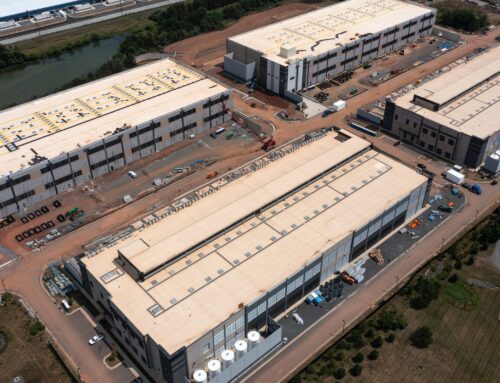Financial advisors assess risks, rewards of investing in infrastructure
November 24, 2025
No matter how much wealth their clients build from big-cap technology stocks, advisors continue to seek stable investments that provide income and durability. Infrastructure is increasingly filling that role in asset allocations, advisors say, because the assets are essential. This makes them resilient across market cycles.
Not only that, but the infrastructure investable universe is expanding across digital, data, energy transition, and transportation sectors.
“They have potential for inflation protection, stable contractual revenues, and low correlation to public markets that leads to downside mitigation. Together, this creates an asset class that can help enhance risk-adjusted return and lower portfolio volatility, when combined with traditional assets,” Michael Reisner, co-CEO, co-founder at CION Investments, told InvestmentNews.
The challenge for advisors, added Reisner, is in selecting the right infrastructure fund manager — especially as the category breaks out.
David Kline, private wealth advisor at Integrated Financial Partners, believes that “real assets” and infrastructure in particular are important components of client portfolios. Nevertheless, he says infrastructure is often overshadowed by real estate despite playing a different role in client portfolios, which is why he allocates to both when appropiate.
He also takes a “core approach” to infrastructure, as opposed to the more expansive one emerging as a result of the growth of AI.
“Certain managers we use have allocations to data centers which have provided some alpha but we are not making data center or AI specific investments,” Kline told InvestmentNews.
Elsewhere, Matthew Smart, director of financial planning and portfolio analysis at WWM Investments, keeps infrastructure as a major part of client portfolios. Electricity demand, grid capacity, and physical build-out timelines have now become the bottleneck for AI expansion, making infrastructure one of the most critical enablers of future economic growth, according to Smart.
“And they’re just getting started,” Smart told InvestmentNews. “Both small and large companies are likely to continue growing. The growth runway is long and structural.”
Smart uses a mix of vehicles to gain exposure to the sector, but the most direct and efficient access points for him have been ETFs. On the smaller company side, he uses First Trust’s RBA American Renaissance ETF (Ticker: AIRR), and on the larger company side he uses the First Trust NASDAQ Clean Edge Smart Grid Infrastructure Index Fund ETF (Ticker: GRID).
“Those two together give us clean exposure to both ends of the infrastructure spectrum. AIRR captures the domestic contractors and project driven firms that feel the acceleration first, while GRID gives us access to the global electrification and power management leaders that benefit from long term grid investment,” Smart said, adding that he also complements the ETF exposure with selective private offerings, especially in areas like data center real estate or energy storage development.
Digging into infrastructure risks
Now that infrastructure has become a hot sector for advisors, the associated risks — valuation, policy, regulatory, interest rates, concentration — are also hitting their radar screens.
Integrated’s Kline says he mitigates risk by grilling infrastructure fund managers with questions surrounding items including the percentage of revenue contractually built-into inflation adjustments, as well as currency risk if they invest globally. He also requires managers to be strict in their definition of “core infrastructure.”
“Every manager defines this differently which can create unknown risks if you are just picking ‘core’ without actively seeking what their core means,” Kline said.
Meanwhile, WWM’s Smart thinks the time it takes to build AI infrastructure is a risk often overlooked by investors, as opposed to the demand for it.
“The challenge is that even when everyone agrees a project is necessary, the timeline can be slow. Transmission lines often take seven to ten years from concept to completion. Substation upgrades can get hung up in local permitting for months or years. Many regions also face labor shortages that make it difficult to accelerate construction even when the funding is available,” Smart said.
Stressed Smart: “The real risk is not whether these projects happen, but the pace at which they roll out.”
Search
RECENT PRESS RELEASES
Related Post



